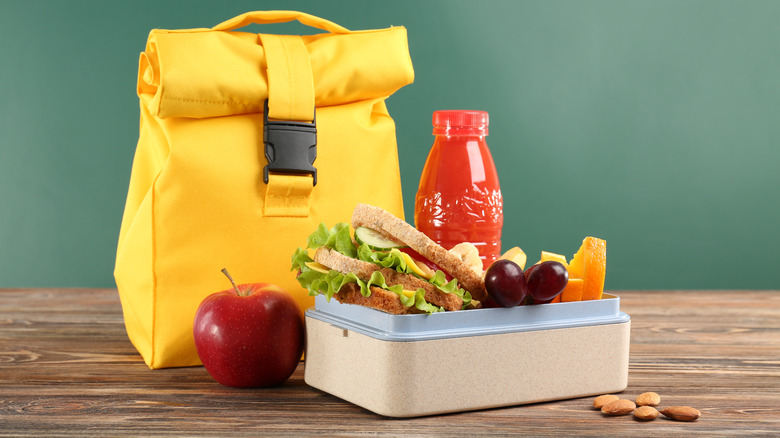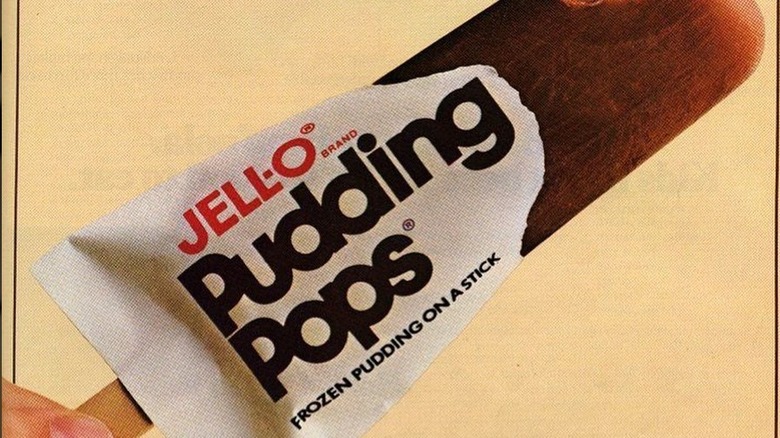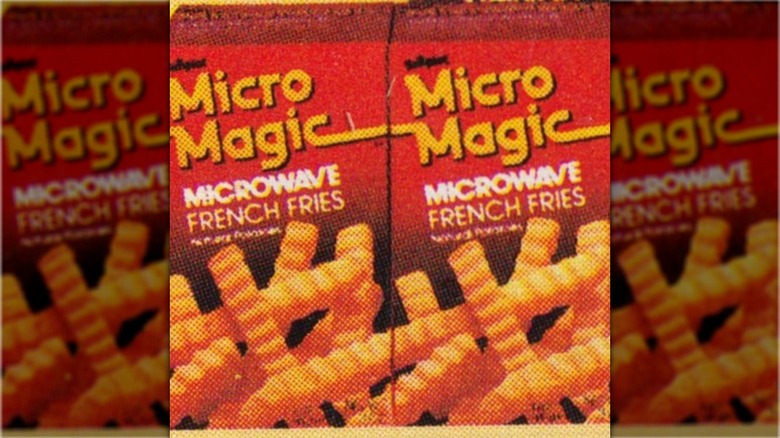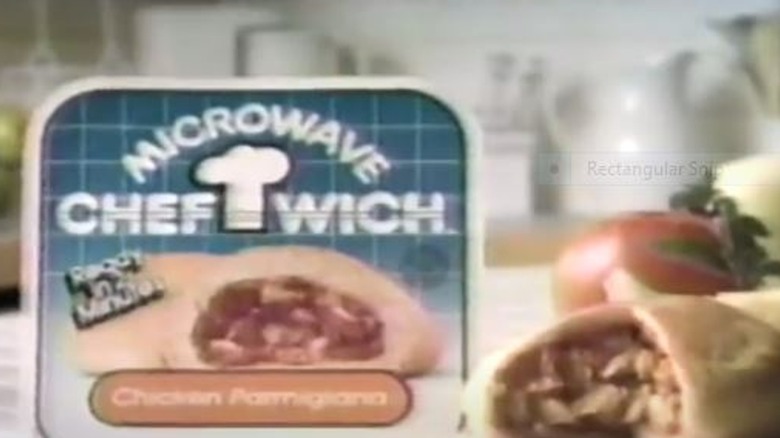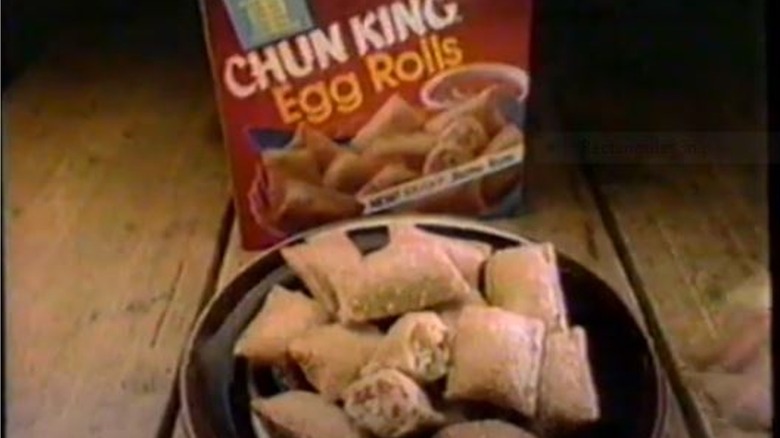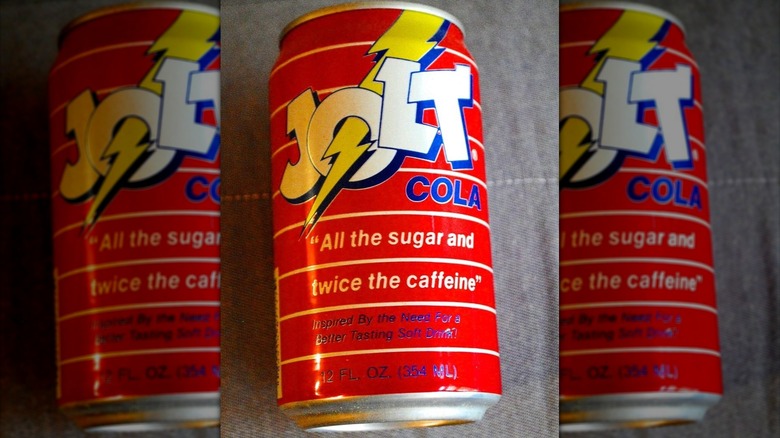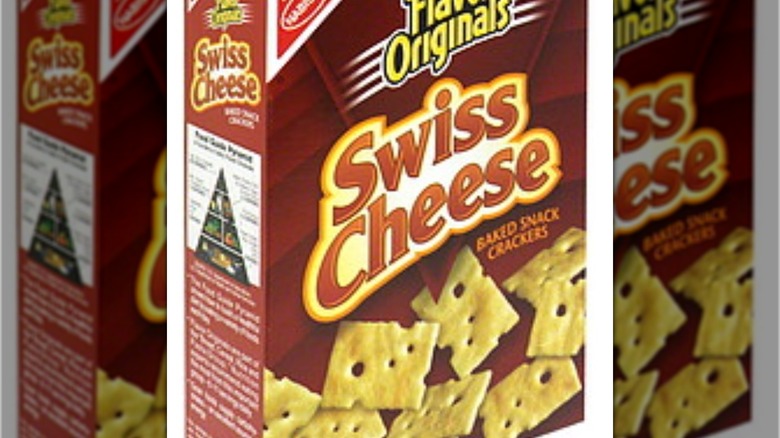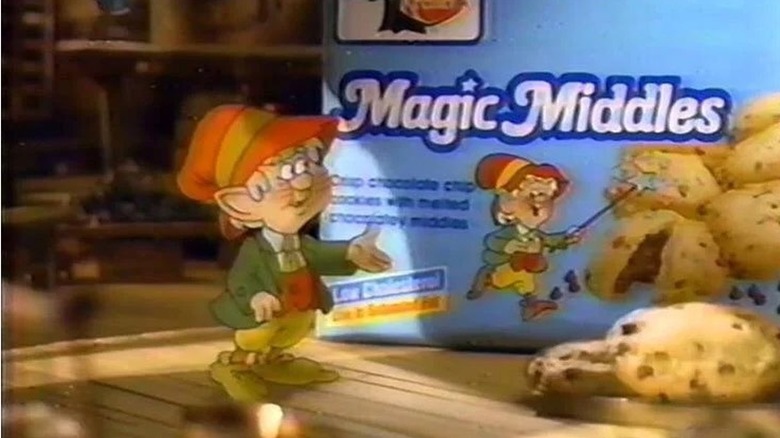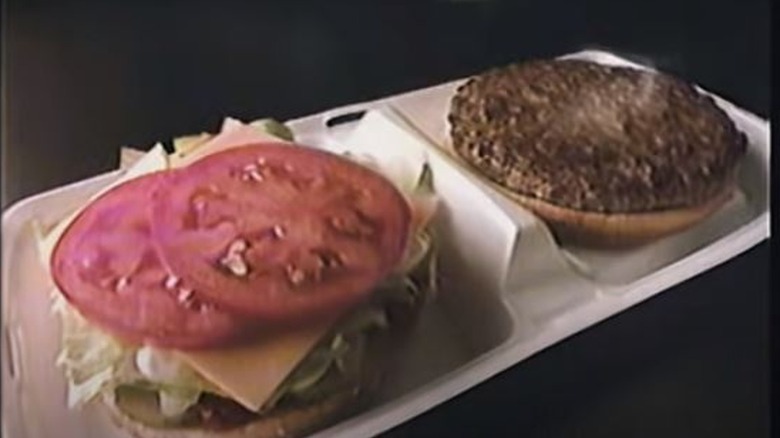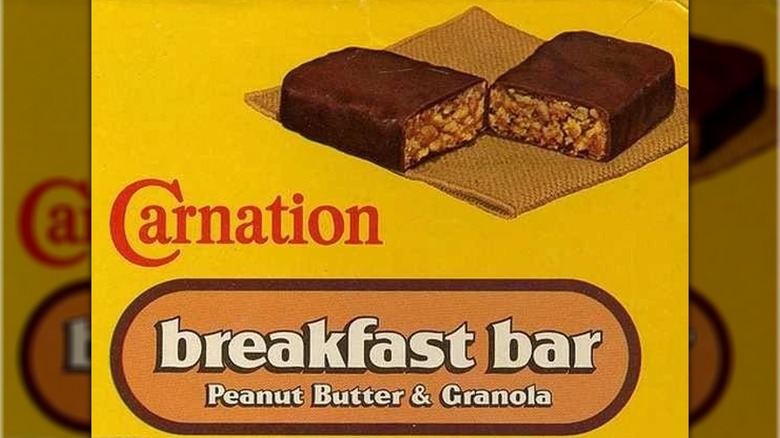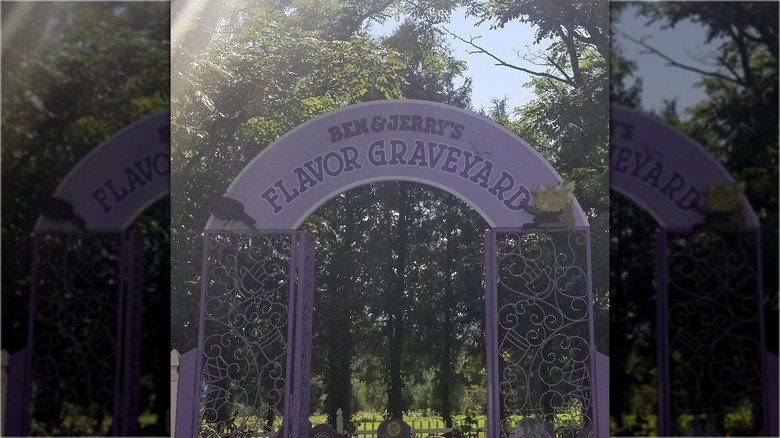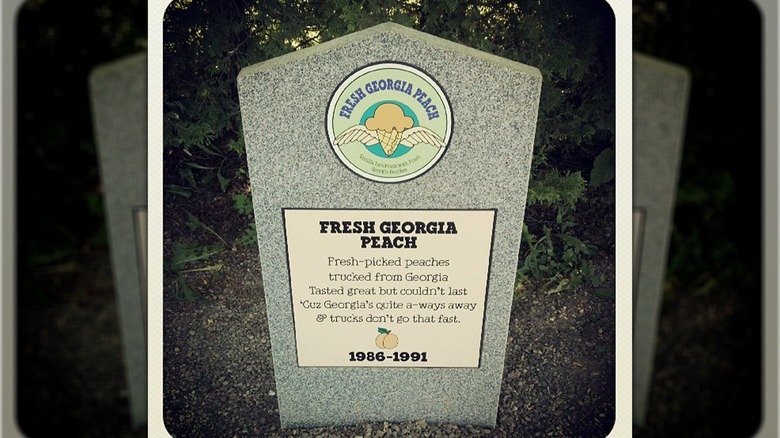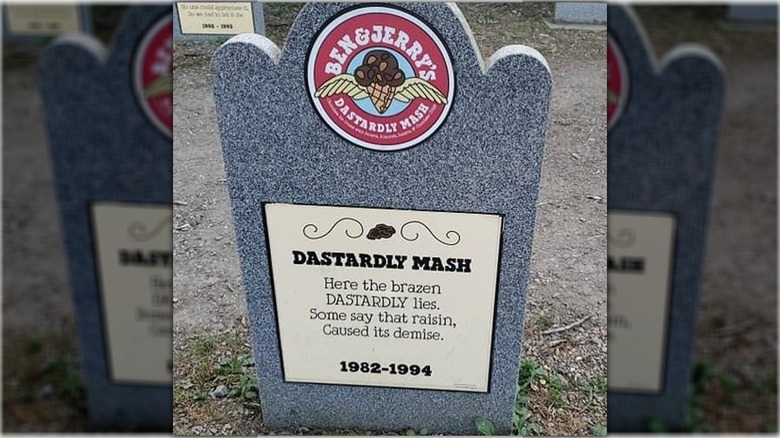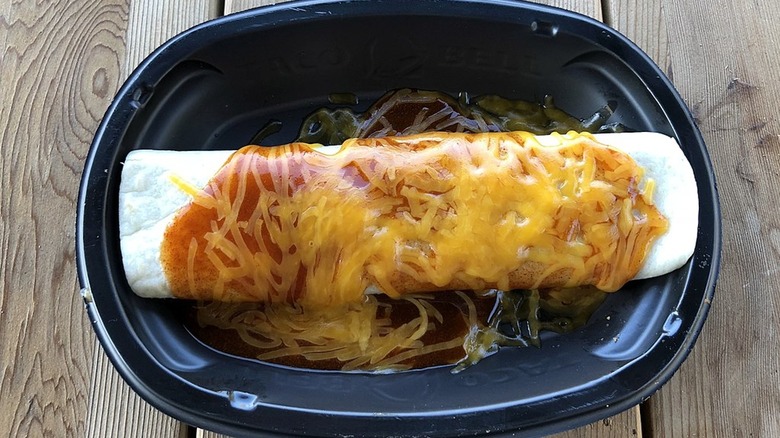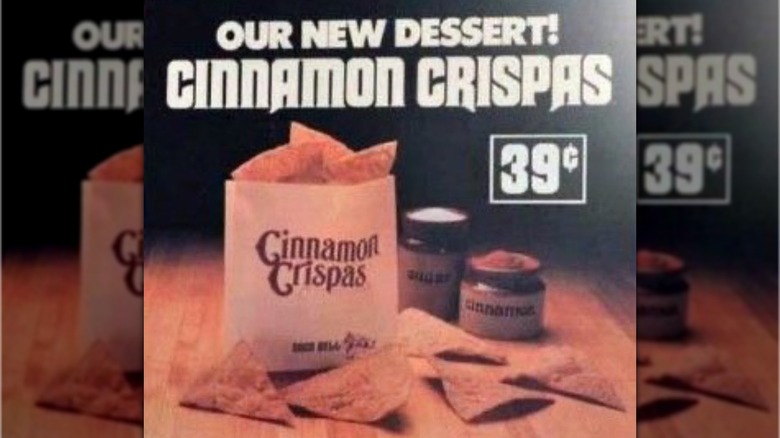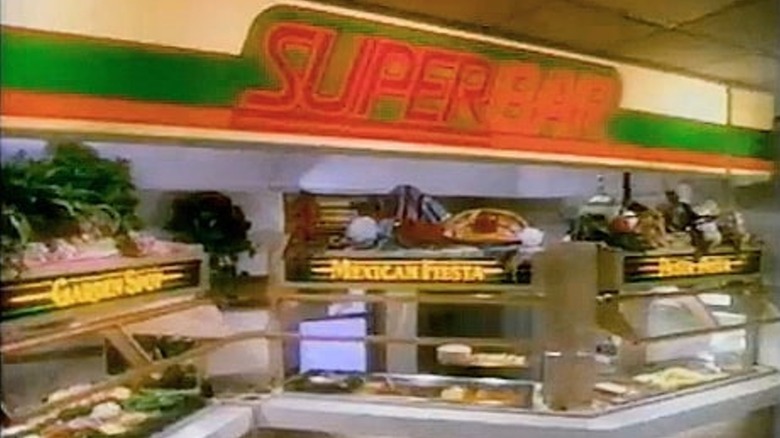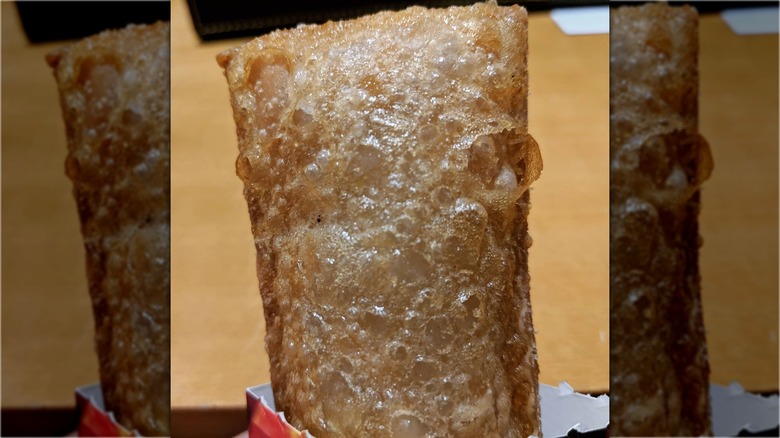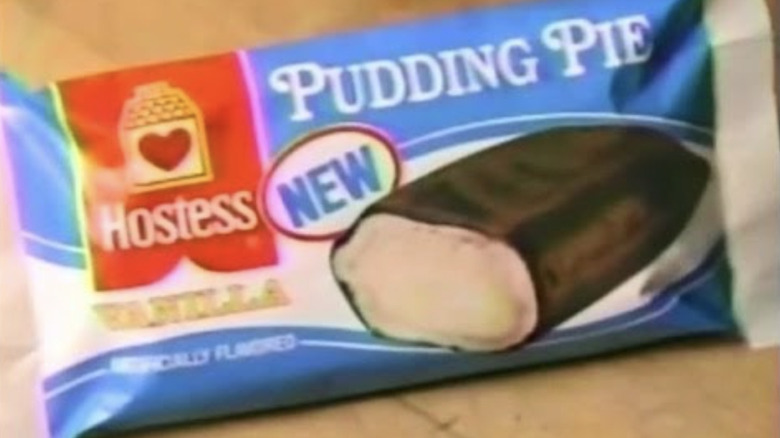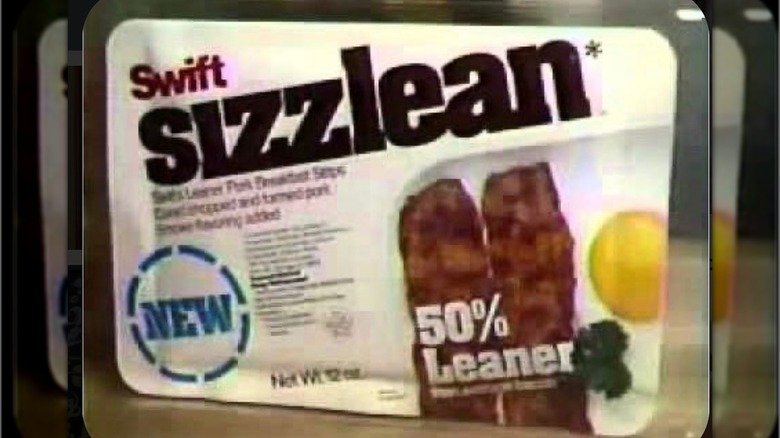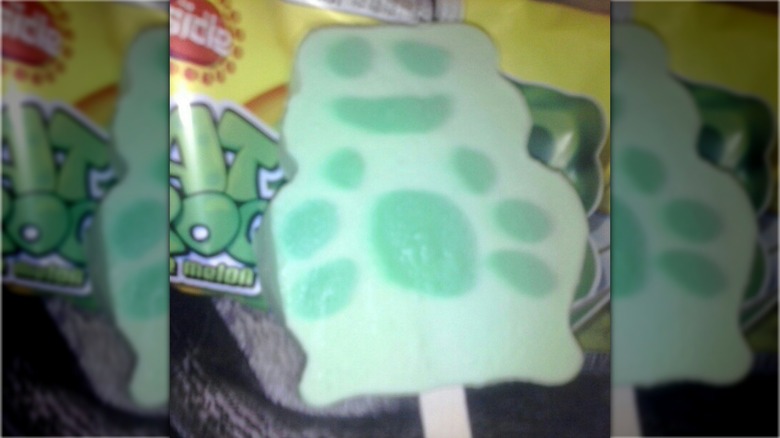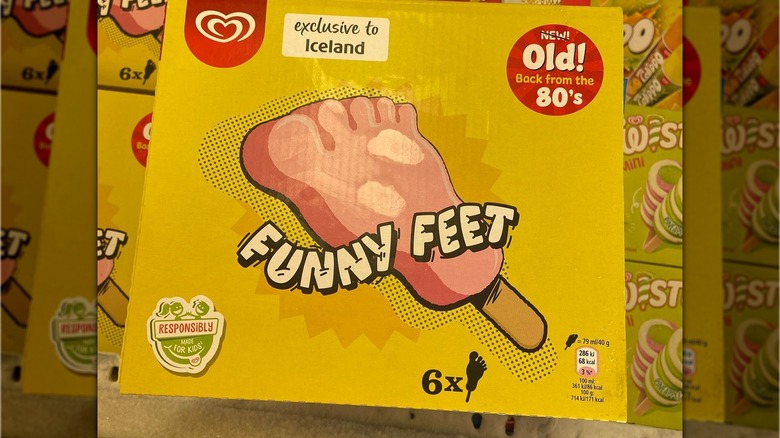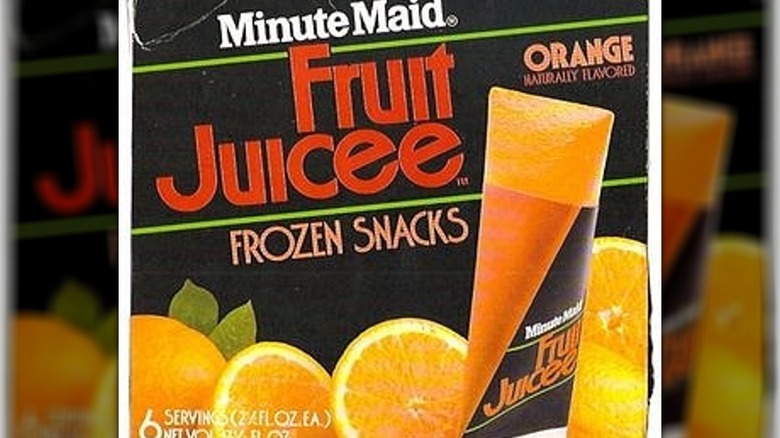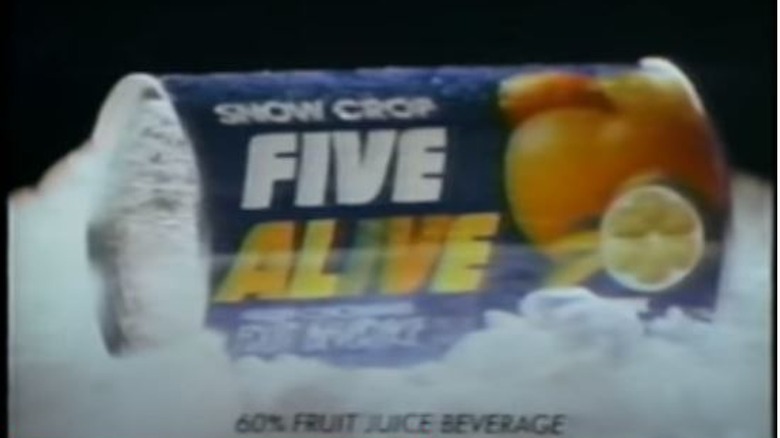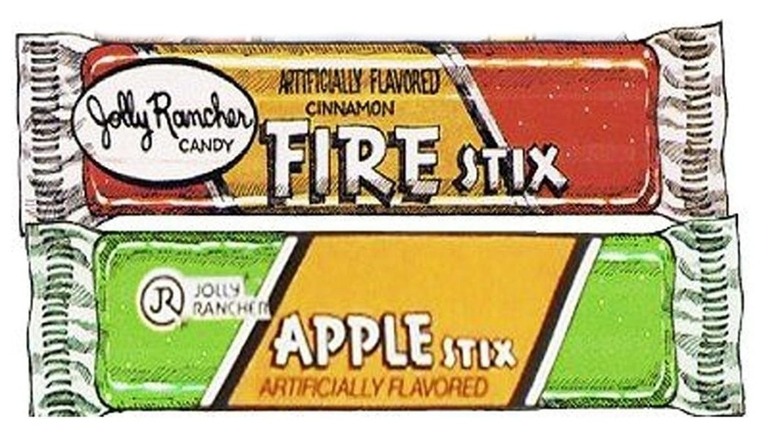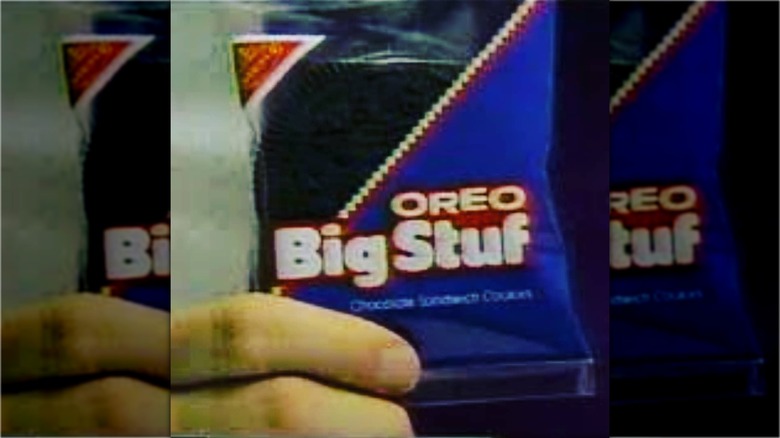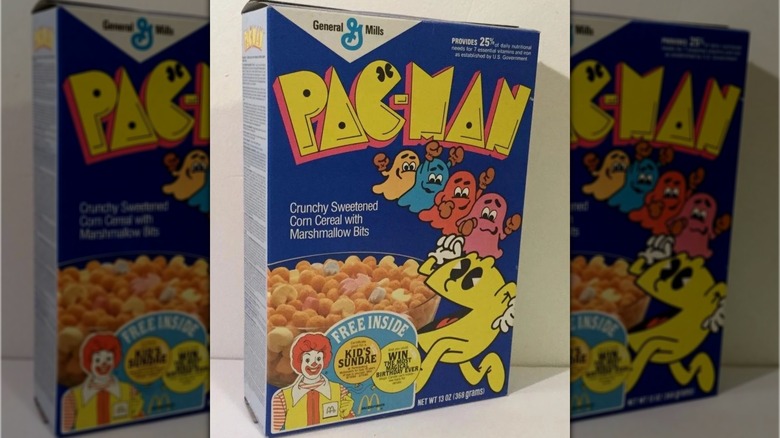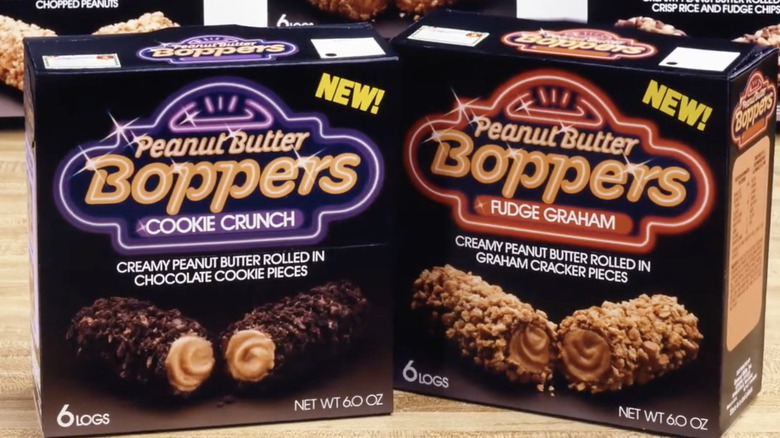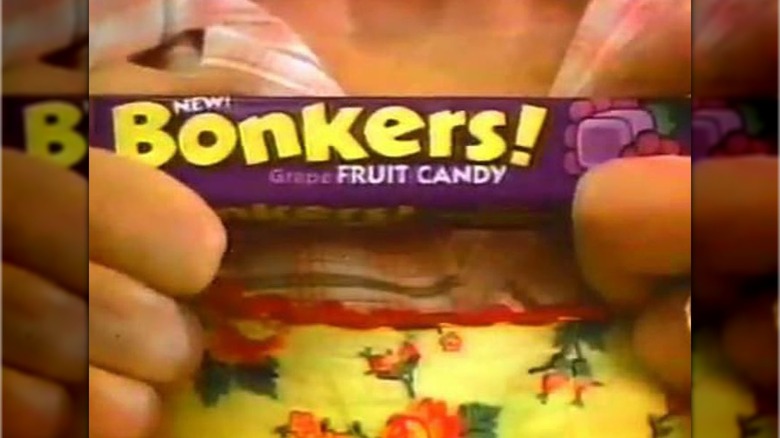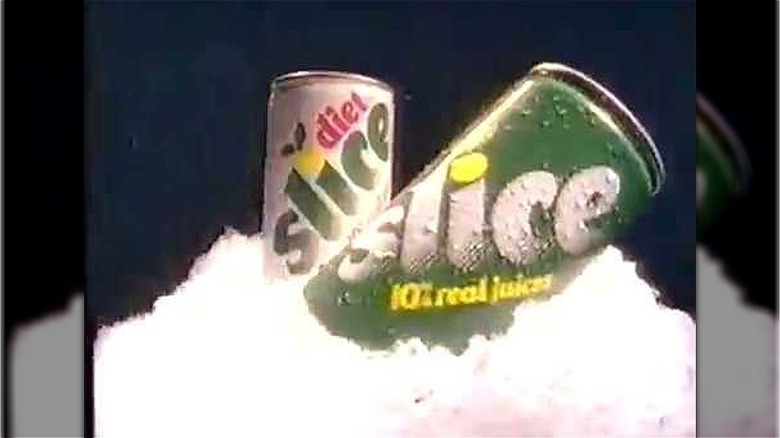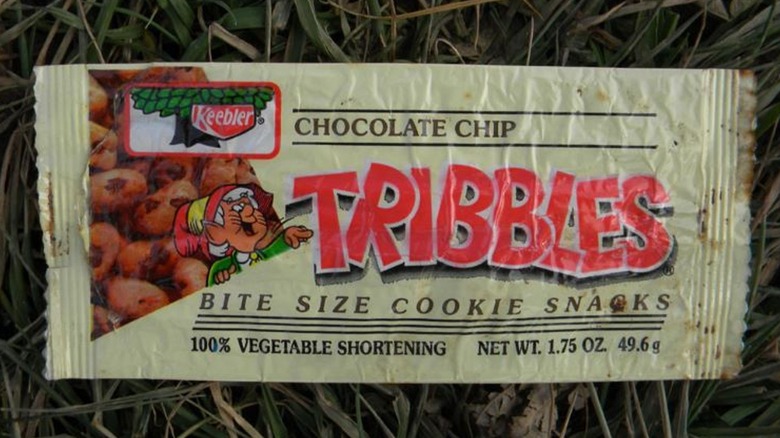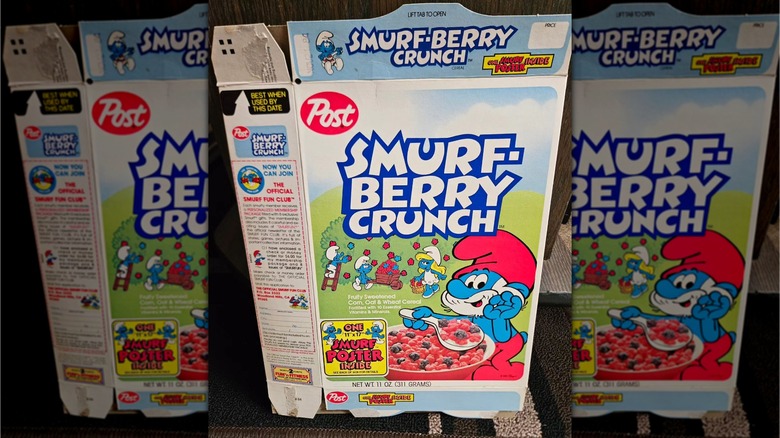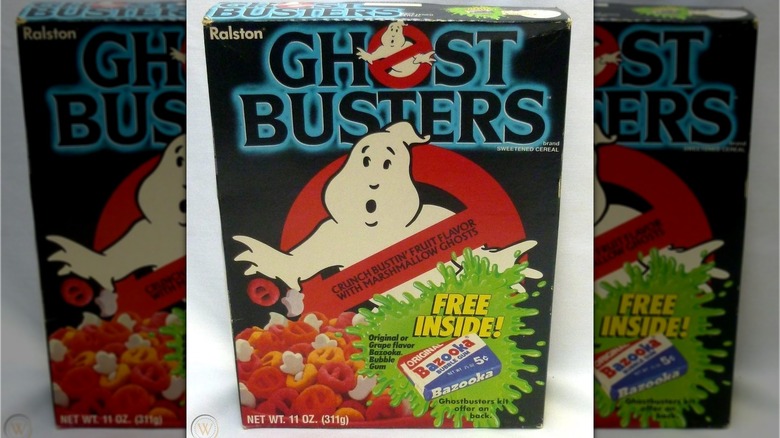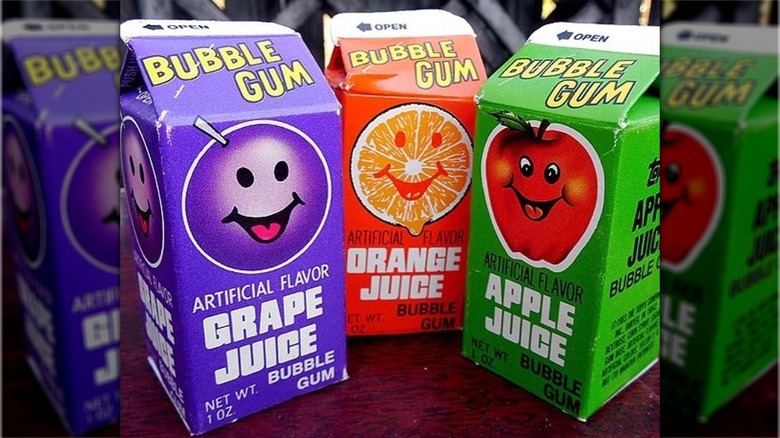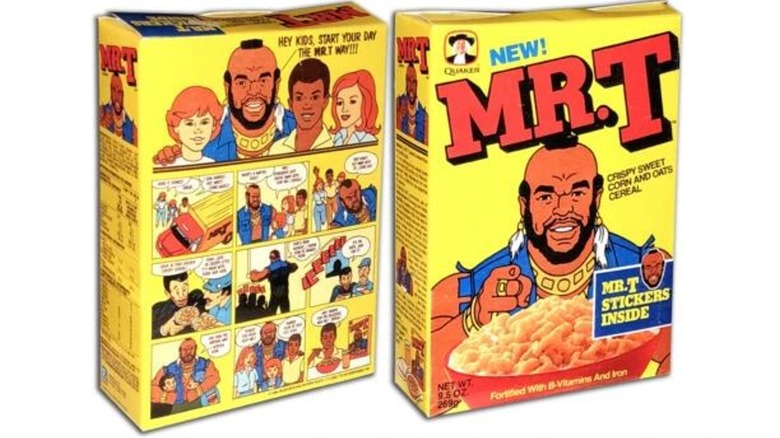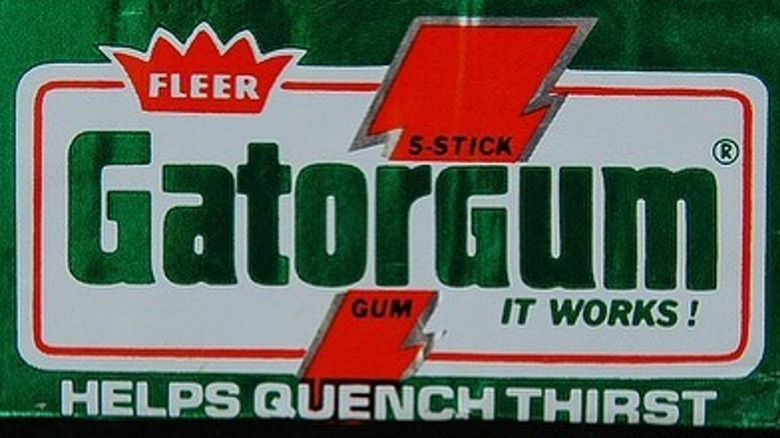34 Once-Popular Foods Every '80s Kid Will Know
Food nostalgia, the experience of being mentally and emotionally taken back to a previous time in your life via the smell, sight, or taste of food, is a real phenomenon. If there's one decade that spurs a lot of food nostalgia, it's the 1980s.
That can have a downside. When brands try to revive products, they often miss the mark due to changes in ingredients. A Redditor who claimed to work at a food-manufacturing company says that many companies have switched more of their ingredients to synthetic versions that don't quite taste the same. That can be disappointing, especially for '80s kids who remember these 34 once-popular foods.
JELL-O Pudding Pops
If there's one food that '80s kids remember, it's the JELL-O Pudding Pop, a frozen treat made of JELL-O pudding with additives to keep the pudding texture soft even when the bar was frozen solid. Pudding Pops were introduced nationwide in 1981, although they had already been in certain markets as a test product for three years. Marketed to kids with Bill Cosby as the spokesperson and to adults with its 90 calories as a selling point, the pops became immensely popular and remained so into the 1990s.
However, they weren't profitable — no, really. The cost to make and market the bars was more than what the bars pulled in, and JELL-O Pudding Pops were eventually discontinued. They've come back in a couple of forms; one was after the brand name was licensed to Popsicle, whose version of the pops didn't have the signature texture or shape. The other is a DIY Pudding Pop kit that you can buy in stores and online.
Micro Magic burgers, fries, and shakes
Another very '80s food that '80s kids will remember is the Micro Magic line of microwavable burgers, fries, and shakes. Those don't sound so unusual now, but at the time, a burger you could zap in a few minutes along with fries and, yes, a shake, was a marvel of time-saving technology. There was a little debate over the shakes. They were sold completely frozen, and you'd place them in the microwave for about 30 seconds or so. The result was a softer but still very cold shake. At the time, early purchasers were pleasantly surprised at the taste and ease of preparation, but other people were a little cynical about actually being able to microwave a shake. The shakes were still popular, though, with one Redditor wishing they'd come back because similar frozen shakes just didn't hold up.
Chefwich
The concept of wrapping a meal-sized amount of food in dough isn't new at all; products like calzones, empanadas, and pasties (not pastries) have been around for centuries. But, as microwaves and convenience foods gained in popularity in the 1980s, brands like Hot Pockets jumped on board to the delight of kids and college students everywhere.
A British brand named Tetley's tried producing its own version of Hot Pockets. This was the Chefwich, which came in different varieties for breakfast, lunch, and dinner. The product didn't last long, but its advertising was certainly memorable, featuring a person "driving" to the microwave to grab a Chefwich before heading out the door.
Chun King Egg Rolls
Remember these tiny rectangular pockets of goodness, microwaved right in the box? Chun King Egg Rolls were an afterschool snack for many kids. They'd come out of the microwave almost burning hot; one commentor on a Straight Dope forum even called them "little brown blisters of liquid pain when fresh out of the oven," but the kids didn't seem to mind.
By the way, if the pillow shape of these egg rolls reminds you of pizza rolls, there's a reason for that. The man who started the Chun King brand was Luigino "Jeno" Paulucci, who decided to start a line of Chinese-American convenience foods that eventually included frozen dinners with these tiny egg rolls as a side. In the 1960s, Paulucci switched to making Italian food and thought using egg roll wrappers with a pizza filling could be a hit. Jeno's products were eventually combined with products from the Totino's company.
Jolt Cola
The ultimate drink of the '80s! With "all the sugar, twice the caffeine," as the slogan on the can said, Jolt Cola became the darling of students who wanted to get that caffeinated buzz without resorting to coffee. Jolt was a bit of an oddity at the time because of the brand's insistence on using real sugar instead of the artificial sweeteners that many sodas were starting to use in the 1980s. The founders, father-and-son duo Joseph and C.J. Rapp, were open about Jolt being a treat and not something that people should ever see as healthy.
Jolt's hold on the caffeine-fiend market waned as more energy drinks entered the scene. The result was a bankruptcy and discontinuation, although the product was eventually brought back. But, it doesn't seem to have the hold on the public consciousness now like it did in the 1980s.
Nabisco Swiss Cheese crackers
Nabisco Swiss Cheese crackers were mildly flavored snacks with holes meant to mimic the look of Swiss cheese. They actually contained real Swiss cheese and were convenient when you wanted a handful of something to eat. They arrived on the scene in the 1970s and remained popular through the 2000s but were eventually discontinued.
Fans of the product who can make it to Canada can find a similar brand of Swiss cheese crackers, but that isn't enough for many. At least one Facebook page was started to try and drum up support for bringing back the crackers, although the last post was made in 2010.
Keebler Magic Middles
Keebler Magic Middles were shortbread cookie pockets filled with chocolate that were popular for the short time they existed in the 1980s, and some fans say they've had trouble convincing other people that the product actually did exist back then. The cookies were brought back in the 2000s and then discontinued a second time, and it's that version that tends to appear in searches. But, as one commercial shows, they really were an '80s cookie.
Why they were discontinued isn't clear. One reason given is that the company wanted to use the manufacturing machinery for other products. Fans want the cookies back, though, and a Facebook page dedicated to bringing back the product is still going strong.
The McDLT
Good in concept and delivery but lacking in packaging alternatives, the McDLT was well-intentioned but ill-fated. McDonald's wanted to create a burger that could compete with the lettuce-laden Whopper from Burger King, and the company wanted to ensure the lettuce, tomato, and top bun half remained cool while the bottom bun and patty remained hot. The solution was to package the burger with the hot ingredients on one side and the cool ingredients on the other and let the customer put them together when ready to eat the burger.
Unfortunately, the McDLT got taken out by a couple of factors. New rules around foam packaging meant the company couldn't use the materials that kept the two sides at their proper temperatures. Another suggested cause was that many McDonald's locations used the wrong cooking equipment, resulting in lukewarm patties.
Carnation Breakfast Bars
Chances are good that you've had Carnation Instant Breakfast at least once. The powdered, vitamin-filled breakfast drink was and is a popular substitute for a larger breakfast on busy mornings. In the mid-1970s, Carnation branched out and created breakfast bars that contained a granola-ish center coated in chocolate. The fillings included peanut butter, cinnamon, raisins, and chocolate chips, and kids loved to snack on these.
But, these seemed to be a phenomenon only in that age group and only in the mid-1970s to early 1990s. Interest waned, the product was relaunched, it didn't succeed, and it was eventually discontinued. Carnation has a "breakfast bar" recipe on its website, but it's more of a fruit-filled oat bar than the chocolate-covered snack you knew from decades ago.
Ben & Jerry's Tennessee Mud
This one is more for the "big kids" of the 1980s: a whiskey-flavored ice cream that lasted only a few years but that certainly made an impression. Available only in 1988 and 1989, Tennessee Mud was a coffee ice cream with added amaretto, almonds, and Jack Daniels whiskey. No real reason was given for the discontinuation; the flavor's tombstone in Ben & Jerry's Flavor Graveyard simply reads that "Mud with Jack Daniels was not meant to last."
Despite its short life, the flavor consistently shows up on lists of discontinued items fans wish would come back, and fans have even tried to make the ice cream at home. However, Ben & Jerry's has declined to bring the flavor back from the dead.
Ben & Jerry's Fresh Georgia Peach
A popular flavor that lasted for about five years, Fresh Georgia Peach combined vanilla ice cream and chunks of real Georgia peaches in a tribute to Southern peaches and cream. Unfortunately, production issues did the flavor in; its tombstone in the Flavor Graveyard mentions that Georgia peaches had to be trucked in from too far away for the flavor's production to continue.
Still, the flavor is a nostalgic favorite. Ben & Jerry's has a link at the bottom of the Graveyard page where you can ask for flavors to be brought back if this is one of those '80s foods you miss.
Ben & Jerry's Dastardly Mash
If a flavor is popular, and producing the flavor isn't terribly hard or expensive, you'd think keeping the flavor would be a no-brainer. So, it's a bit surprising to find out what happened to Dastardly Mash, another Ben & Jerry's flavor that landed in the Flavor Graveyard. The flavor was available for 12 years and contained nuts, raisins, and chocolate chips in chocolate ice cream. Ben discontinued the flavor in 1994, much to Jerry's chagrin. They still debate the decision. Ben's explanation was that he began to dislike the texture of the raisins in the ice cream even though sales of the flavor were good.
Taco Bell Enchirito
For Taco Bell fans, the original Enchirito is a fond memory of how Taco Bell used to be. The dish is a burrito covered with lots of enchilada sauce, something no other restaurant offered. It was created in the early 1970s and discontinued in the early 1990s.
The Enchirito remained hugely popular, however, so much so that it was brought back in the late 1990s and lasted through the mid 2010s. It's come back for limited runs a couple of times since then, first in 2022 when Taco Bell held a vote to see which product customers wanted to bring back, and again in 2023 simply because the company decided it could.
[Featured image by Thomson200 via Wikimedia Commons | Cropped and scaled | CC0]
Taco Bell Cinnamon Crispas
Taco Bell may be known for tacos and other main dishes, but the company also offers dessert. Nowadays, you can get Cinnamon Twists, but in the 1980s, you could get Cinnamon Crispas, which were fried, triangular tortilla chips doused in cinnamon sugar.
While people still order the Twists, the consensus is that the Crispas were far superior. This Redditor calls the Twists a downgrade from the Crispas, this Redditor compares the Twists to Styrofoam, this Redditor says the Twists are dry compared to the Crispas, and commentors in this entire post dunk on the Twists and reminisce about the Crispas. It's kind of baffling why the Crispas were discontinued at all.
Wendy's Superbar
This was more of a concept than a single food product, but it was very popular in the 1980s: The Wendy's Superbar. This was a salad bar and buffet inside Wendy's restaurants where you could get pasta, tacos, and other foods you don't typically associate with fast-food Wendy's. Even better, it was an all-you-can-eat deal for only a few dollars. But, that costly supply of food combined with the low price of entry for customers forced Wendy's to shut the Superbar down.
Customers, understandably, hold fond memories of it. In this Reddit thread, commentors remember how they'd go there every day during summer vacation and how the food was generally fresh.
Actually deep-fried McDonald's apple pies
McDonald's original process for making their apple pies was to fry them. The fried pies were replaced with baked pies in the early 1990s in most of the United States; the reason for the switch was to make the pies a little healthier as consumers in general were turning away from fattier foods. Fans of the fried version were obviously unhappy.
You saw that "most of," right? Well, if you ever travel to Hawaii, you can still score the deep-fried pies. In an interview with Honolulu magazine, franchise owner Victor Lim said franchises in the state initially sold the baked pies, but customers preferred the fried version, so the Hawaii franchises were allowed to keep selling them. The oldest existing McDonald's restaurant, located in Downey, California, also sells the fried pies.
Hostess Pudding Pie
Hostess is known for cream-filled cakes and fruit-filled hand pies, and they decided to combine elements of the two at one point to create the Hostess Pudding Pie. This looked like one of their fruit pies but was filled with pudding instead and given a light coating of chocolate. It was calorie-packed, sugary, and fatty, and it was pretty much a kid's dessert dream.
They were well-loved but didn't last. At least, they were gone until the 2000s, when reports of sightings emerged. Customers mention finding the pudding pies at convenience stores, and Amazon has a listing for the pie with an updated wrapper. Unfortunately, the pie is listed as unavailable, and there's been no announcement of any re-release.
Sizzlean
Sizzlean was processed "bacon" made from ground turkey, pork, and beef that was formed and cut into bacon-like strips. It was meant to be a leaner version of bacon for those who wanted the taste and form of bacon on their plates but didn't want the fat and grease associated with real pork bacon. It was a popular product but was discontinued after it was sold to ConAgra. No real reason was ever given, although speculation includes declining sales and the fact that ConAgra just might not have been interested in making it any longer.
Customers remember Sizzlean fondly. Commentors in this Reddit thread, for example, remember their families making it, particularly their grandparents. It may not have been an exciting product like pudding pies or microwavable shakes, but it helped families form happy memories — that's a rather nice accomplishment.
Fat Frog ice cream
Running to the ice cream truck in summer is a happy memory for many, and among the treats that '80s kids liked to get was something called Fat Frog. This was a chunk of green ice cream shaped like — take a guess — a fat frog, with a chocolate layer on one side and two gumball "eyes" on the other, though some remember the eyes as being chocolate or peanut butter candies. The flavor was vaguely fruitlike, and the whole thing was on a stick for easy eating.
One bit of confusion surrounded how to eat the part of the frog that held the gumballs. Do you eat them with the ice cream and hold them in your mouth until you're done with the ice cream, do you eat around them, or do you throw them away? No reason is available for why Good Humor discontinued Fat Frog, and people miss the confection dearly.
Funny Feet ice cream
Hopping over the pond to the UK and Ireland finds a very popular '80s ice cream that, to the delight of fans, made a recent comeback. Funny Feet ice cream is a light pink chunk of strawberry ice cream shaped like a large foot, complete with individual toes. It was a favorite in the 1980s but ended up being discontinued.
The original manufacturer was Wall, who eventually brought Funny Feet back in 2013. But then Funny Feet disappeared again, only to return to Ireland in 2014 from maker HB and again in 2021 in the UK through the Iceland supermarket chain.
Minute Maid Fruit Juicee Frozen Snacks
Yes, that's "Juicee" with two e's at the end. These twisted, wedge-shaped ice bars were a surprise hit, first made for a school lunch program in New York. The company decided to take them nationwide and turn them into a commercial product after kids in the lunch program fell hard for the icy treats. These were like ice bars but without the stick; the wedge shape made them easier to hold while you ate them. Minute Maid still sells a frozen juice product with the same shape nowadays, but the current product is 100% juice, while the Juicees were 90% juice.
Five Alive
Sometimes a product is still around but is linked with the 1980s in people's minds, often resulting in surprise when those people find the product still in production. In the United States, that describes Five Alive juice, which is available outside the country and shows up randomly in stores here. Kids loved drinking this stuff; a post on Reddit elicited several comments about how good it was.
Five Alive featured a mix of orange, lemon, lime, tangerine, and grapefruit juices. It was available in cartons and as juice concentrate. Five Alive isn't widely available in the U.S. but was available in Canada in 2019. But, a writer for radio station WBKR in Owensboro, Kentucky, wrote on the station's website that he found Five Alive in concentrate form in 2020 in a local Kroger.
Jolly Rancher Stix (the large size)
Jolly Rancher Stix still exist, but those are shorter than the ones kids in the 1970s and 1980s could get. The larger Stix came in just a few flavors, including the spicy cinnamon Fire Stix. They took a long time to eat, and as this Redditor reminds us, if you broke off just the right amount, you could stick it on the roof of your mouth and pretend it was a retainer.
The Stix were also some of the sharpest candies around, and we don't mean their appearance. Kids sucking on the end of one of the Stix could easily whittle it down to a sharp edge, and this Redditor remembers accidentally cutting themselves with the candy. Biting into the Stix could also trap your teeth for a while because the candy could be so sticky once it started to soften up. As this Redditor put it, the candy could "pull your teeth out of your head before the dentist got the chance."
Oreo Big Stuf
Oreo does a lot to their cookies, from reducing or expanding the "stuf" inside to making the cookies thinner or thicker. One thing they tried in the 1980s was making the cookie wider — much wider. So much wider that the sandwich cookie looked more like a sandwich than a cookie. Okay, maybe not that big, but it was easily the size of your palm. This was the Oreo Big Stuf, an individually packaged cookie that clocked in at 316 calories.
No one really knows why Nabisco stopped production on the cookie, not even customer service reps from Mondelēz International, which currently makes Oreos. There's at least one petition to bring back the Big Stuf, but for now, Oreos are only expanding vertically with the addition of even more filling.
Pac-Man cereal
The '80s were the arcade decade, with video games taking over popular culture. General Mills wanted to catch up with another company that had released a game-based cereal and decided to focus on "Pac-Man." This was a pretty typical cereal at the time, with corn puffs and marshmallows shaped like Pac-Man and the ghosts in the game. Subsequent versions included Super Pac-Man and Ms. Pac-Man cereals; that last one was the first to have multicolored marshmallows.
The cereal was discontinued in 1988 after the game's popularity started to fade. The cereal made its mark, however; you can view an original box on the website of the Smithsonian's National Museum of American History.
Nature Valley Peanut Butter Boppers
Nature Valley granola bars from General Mills are a long-time lunchbox staple. In the mid-1980s, General Mills decided to produce something a little sweeter than the granola bars, and the result was the Peanut Butter Bopper. These were cylinders of peanut butter covered in chocolate and a topping like nuts or crispy rice. Flavors included Fudge Chip and Cookie Crunch, so these were not the oats and honey that the company's customers were used to.
Peanut Butter Boppers were also much softer to bite into compared to the hard granola bars and were a hit at first. However, General Mills discontinued them for unknown reasons. In 2023, people asked General Mills over social media if the company could bring the Boppers back, but the only answer was that the people running the social media account would let the company know.
Bonkers! fruit candy
Picture a Starburst chew with a two-tone appearance and a fruit-flavored center and you have Bonkers! fruit chews. These were an extremely popular candy in the 1980s, but the chews were later discontinued.
In the mid-2010s, Leaf Brands announced they were going to start making Bonkers! again, hopefully for release in 2015. Nothing happened until 2018 when the company again issued a press release stating the candies were finally coming back. While there are candy sites that list a recent product, those are sold out, and comments on Leaf's Facebook page for Bonkers! ask for updates. Leaf itself doesn't list Bonkers! as a current product, either.
Slice soda with juice content
The original Slice soda distinguished itself from its competitors by having a juice content of 10%. But, its initial popularity brought with it a number of new competitors that quickly gained an edge over the juicy soda, eventually eclipsing it. Slice soda faded into the background, and its flavors were either discontinued or replaced with new brands like Sierra Mist.
In 2022, fans got a jolt after a report that Slice was coming back. However, it turned out that the new "Slice" was actually a sparkling water product that had been released in 2018. But in 2021, Slice soda actually did come back, with juice and different sweeteners.
Keebler Tribbles
This is a weird one. Keebler had a short-lived snack called Tribbles. You read that correctly. These were tiny cookies in a pouch, and they were cute, but if you're a "Star Trek" fan, you know there were some issues.
Tribbles — the cookies — were created by Bitesize International, which was later bought by Keebler. However, Paramount went after Bitesize over the name even though Bitesize had trademarked it for the cookies, and Keebler ended up joining the lawsuit as a co-defendant in 1989. The case was eventually terminated. Whether this was the cause of the cookies' demise is still unknown.
Smurf-Berry Crunch cereal
While we're on the subject of strange demises, here's one where there was no trademark issue, but rather a, uh, bathroom issue. Smurf-Berry Crunch was a popular cereal among fans of the "Smurfs" cartoon and was around in different forms for a few years in the 1980s. The problem was that a blue dye used in the cereal didn't digest well. In other words, that blue dye passed right through and turned, well, you know what, blue. Parents were alarmed, although the effect was similar to that of other dyes in cereals. Still, the complaints led Post, the manufacturer, to reformulate the product, which was given a new Smurf-related name.
Ghostbusters cereal
"Ghostbusters" was such a hit in 1984 that it got its own cereal, a concoction of white ghost marshmallows and colored, fruity circles with lines through them, meant to mimic that red circle seen in the "Ghostbusters" logo. The cereal wasn't so much discontinued as it was repurposed and renamed every time another "Ghostbusters" property arrived. Ghostbusters cereal turned into the Real Ghostbusters cereal, then Ghostbusters II cereal, and then Slimer With Real Ghostbusters cereal.
The cereal was discontinued after a few years, but some reported seeing the cereal back in stores in 2021. This was a limited release to celebrate the opening of the movie "Ghostbusters: Afterlife."
Topps Bubble Gum juice cartons
Sometimes it's not about the food itself but the way the food is presented that makes it memorable. There are tons of bubble gum brands, but Topps topped them all in the 1980s with their small "juice cartons" filled with pieces of fruit-flavored gum. The gum looked like little rocks, and the initial burst of flavor combined with the novelty of biting into what looked like pebbles made the gum a success. The flavor faded fast, though; this Redditor summed it up nicely when they said it was "30 seconds of pure flavor satisfaction."
The way some of the flavors were packaged made the gum stand out even more. One flavor, pink lemonade, had two different flavors in it that chewers could combine. One was sweeter and one was more sour, creating a perfectly customized flavor.
Mr. T cereal
Those of you who watched the '80s TV show "The A-Team" will remember Mr. T as B. A. Baracus, the tough guy with a fear of flying. The show made him so popular that he got his own cereal. Mr. T cereal was made by Quaker and had corn and oat nuggets that were shaped like the letter T. While the Houston Press has jokingly referred to them as "Corn Pops rip-offs," even they loved the cereal.
Mr. T cereal became such a visible part of 1980s culture that it played a role in the movie "Pee-Wee's Big Adventure." A one-minute scene in the movie shows Pee-Wee (Paul Reubens) pouring dry Mr. T cereal over a breakfast plate and then eating it with a fork, just after imitating Mr. T.
Gatorade Gator Gum
What did you do when you craved the flavor of Gatorade but didn't want to actually drink it? In the 1980s, you could get Gatorade Gator Gum. The gum was first manufactured in the 1970s and wasn't discontinued until after the late 1980s when its manufacturing contract expired.
The gum wasn't everyone's favorite; even people who liked it admitted that the gum only made you thirsty despite the wrapper claiming it would quench thirst. One Redditor claimed the best part of the gum was when you chewed on a flavor crystal after the majority of the flavor had already disappeared. Regardless, there's no doubt it's a good memory for many kids of the '80s.
